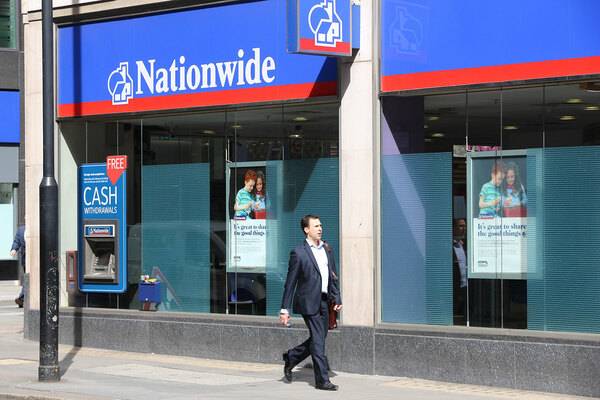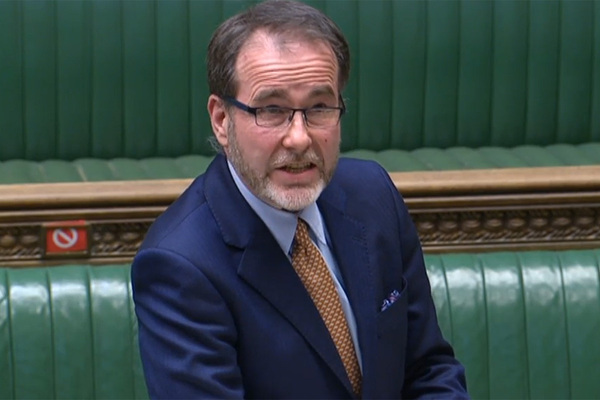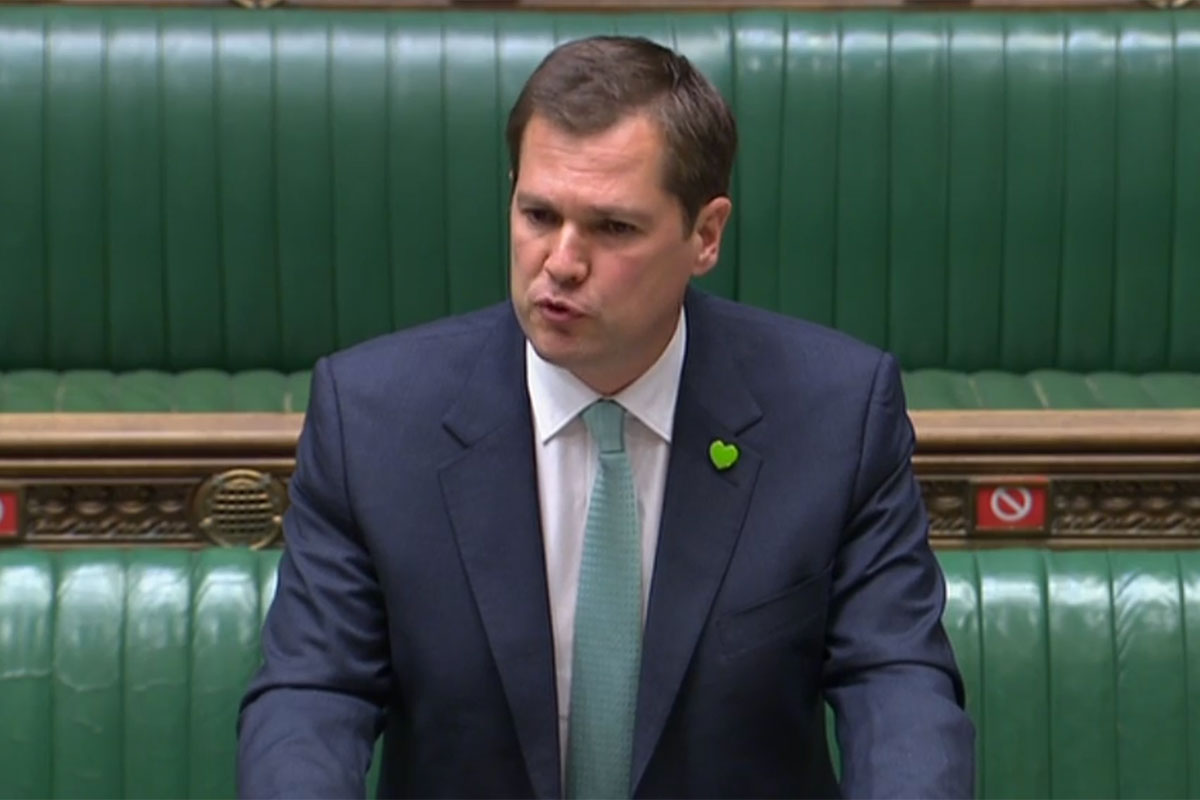You are viewing 1 of your 1 free articles
EWS crisis: some banks could still ask for EWS1 forms on buildings exempt under new RICS guidance
Prospective homebuyers may still be asked to provide external wall system (EWS1) forms on properties that are meant to be exempt, as high street lenders adjust to new guidance on the issue, Inside Housing can reveal.
Analysis by Inside Housing has found that at least two of the country’s 10 largest banks may still ask for an EWS1 form on some buildings that should no longer require them according to the Royal Institution of Chartered Surveyors’ (RICS) new guidance, which came into effect this month.
Nationwide and Lloyds have indicated that they could still require EWS1 forms on certain exempt buildings.
HSBC said that it has yet to make a decision but that it is reviewing its policy, taking into account the RICS criteria.
The EWS1 form is given to a bank before it provides a mortgage, and indicates whether a building requires remedial works relating to building safety.
Over the past 12 months, it has been required by most banks or building societies when providing mortgages for flats in the majority of multi-occupancy blocks, even those of four storeys or fewer.
Earlier this month, RICS issued new, narrower guidance aimed at severely reducing the number of buildings that require the controversial form.
The changes include making buildings under four storeys that do not contain any form of metal composite cladding (MCM) or high-pressure laminate (HPL) cladding exempt from needing an EWS1 check, as well as other types of buildings (see full list below). The guidance is not statutory and banks can decide whether to adopt it.
The government estimated that the move would free up to 500,000 leaseholders from being asked to provide these documents, which can be costly and difficult to obtain.
However, Inside Housing has found that some banks will still require EWS1 forms on buildings covered by the RICS guidance.
Nationwide, the country’s largest building society, said that there will be cases where it will still require an EWS1 form outside of the RICS guidance, including where there are “very specific concerns for properties of four or fewer storeys where there is not government support for leaseholders”.
It added: “The RICS risk matrix puts these out of scope but acknowledges that these buildings could require works that the borrower would need to fund.”
RICS guidance
For buildings over six storeys, an EWS1 form should be required where:
- there is cladding or curtain wall glazing on the building, or
- there are balconies that stack vertically above each other and either both the balustrades and decking are constructed with combustible materials (eg timber) or the decking is constructed with combustible materials and the balconies are directly linked by combustible material
For buildings of five or six storeys, an EWS form should be required where:
- there is a significant amount of cladding on the building (for the purpose of this guidance, approximately one-quarter of the whole elevation estimated from what is visible standing at ground level is a significant amount), or
- there are ACM, MCM or HPL panels on the building, or
- there are balconies that stack vertically above each other and either both the balustrades and decking are constructed with combustible materials (eg timber), or the decking is constructed with combustible materials and the balconies are directly linked by combustible materials
For buildings of four storeys or fewer, an EWS form should be required where:
- there are ACM, MCM or HPL panels on the building
The society, which saw its total gross residential mortgage lending hit £12.7bn in September, also said that for buildings over four storeys, it was “broadly aligned with the RICS guidance” but that its implementation “links closely with the scope of the government £3.5bn funding grant and loan scheme to support leaseholders”.
Lloyds Bank, the UK’s largest mortgage provider, which lent more than £40bn to first-time buyers between 2018 and 2020, said that it welcomes the guidance, which “should provide much-needed clarity on consistency for lender, surveyors and homeowners”, but that it will continue to take a “risk-based” approach and assess applications on a case-by-case basis.
HSBC said that it is not in a position to provide any detail on its approach at the moment but that it welcomes the guidance and would be reviewing its policy while taking into account the criteria set out by RICS.
Coventry Building Society, TSB, Santander and Yorkshire Building Society all said they will rely on valuers to decide when an EWS1 form will be required.
The EWS1 process was launched in December 2019 as a way of unlocking the flat sale market. However, since then thousands of leaseholders have been left trapped in their homes unable to secure the checks and forms, due to high demand and a lack of qualified professionals able to carry them out. In some cases, leaseholders have been told they could have to wait up to a decade for an EWS1 check.
When the updated guidance was published last month, UK Finance, the body that represents banks, and the Building Societies Association (BSA), said that they anticipated that “many lenders would implement the guidance” but that this would be a decision for each lender based on their own risk appetite.
Nichola Venables, chief executive of New Build Database, said: “Lenders appear reluctant to make any changes to their EWS1 policies since RICS updated their guidance.
“From the lenders’ viewpoint, it’s understandable that they would be cautious in making a change. From the beginning of 2020, when many lenders wouldn’t lend on high-rise buildings at all to the current position, they may feel they have reached the limit of their risk appetite.”
Some lenders – including Yorkshire Building Society, NatWest, Barclays, Coventry Building Society, TSB and Virgin Money – said they already align or are in the process of aligning their policies with the new guidance.
However, NatWest did say that the new guidance did not change the EWS1 gradings on buildings already checked and that it would not reverse the decisions on buildings already deemed to have flammable cladding, unless a building has been remediated.
A RICS spokesperson said: “The guidance aims to reduce the number of unnecessary requests made for EWS1 forms by providing a clear criteria for valuers to follow.
“We have worked closely with the appropriate stakeholders to develop the guidance and make sure that it will make a difference in the market. UK Finance and BSA are supportive of the guidance, however, all individual lenders are able to make their own lending decisions.”
A Ministry of Housing, Communities and Local Government spokesperson said: “The EWS1 is not a government form, legal requirement or a building safety certificate and we’re disappointed if this is still being asked for in some cases where it’s not necessary.
“The new guidance from RICS means nearly 500,000 leaseholders should no longer need a form to sell or remortgage their homes and where valuations are needed, we’re providing nearly £700,000 for RICS to train new assessors to speed up the process, with over 500 enrolled so far.”
Bank responses in full
Virgin Money
“We have been actively engaged in UK Finance’s RICS consultation and as a responsible lender fully support a safe housing market. We are reviewing how we lend to customers with properties impacted by cladding. We remain committed to supporting customers with any cladding-related queries or concerns.”
Nationwide
“The RICS guidance gives further clarity and reassurance to the thousands of homeowners and tenants across the UK living in properties impacted by cladding and fire safety issues. Our lending approach is very much in line with this guidance although there will be occasional instances where, as a responsible lender, we still require an EWS1 form. We have a duty of care to protect all our borrowers and ensure properties we are lending on are safe for those that reside in them.
“There will be cases where we’ll require an EWS1 outside of the RICS guidance, for example where there are very specific concerns for properties of four or fewer storeys where there is no government support for leaseholders. The RICS risk matrix puts these out of scope but acknowledges that these buildings could require works that the borrower would need to fund. Our view is the borrower also needs to be aware of these costs before they buy the property and as a responsible lender we need to know if the borrower can afford these works and the valuation has taken into account any cost of remediation.
“For buildings over four storeys we are broadly aligned with the RICS guidance, however implementation of this links closely with the scope of the government £3.5bn funding grant and loan scheme to support leaseholders. This funding is a decisive step forward which we hope brings some relief to people worried about the safety of their homes. We look forward to working with government, lenders and other interested parties to understand the details of this funding so the initiative can be implemented.”
Santander
“Since July 2020, Santander’s approach has been that, where a valuer requires additional information on cladding, and in the absence of an EWS1 form, we can instead ask the building management to answer a series of questions on the building and its construction.
“This approach is already in line with the updated RICS guidance and helps homebuyers progress mortgage applications, avoiding lengthy delays in obtaining the EWS1. We hope to see the updated guidance reduce the number of requests for further information on cladding made by valuers before providing a mortgage valuation.
“Cladding does not impact an existing mortgage customer’s ability to complete a product transfer with us and move to a new mortgage rate when they are not taking on any additional borrowing, or changing the mortgage term.”
TSB
“Like every mortgage provider we must investigate property value and affordability – both of which could be affected by the cost of mitigating and remediating fire safety issues.
“An EWS1 assessment is the most consistent way to determine these issues, so our policy, based on existing advice to industry, is to obtain an EWS1 where recommended by a valuer before we make a mortgage offer.
“This applies to flats and apartments within buildings of any height and excludes houses. EWS1 ratings of A3 or B2 are unacceptable to TSB due to safety issues and unknown remediation costs.
“TSB’s requirements will therefore not change as we’re in line with RICS guidance already. However, we are supportive of the new guidelines as it will mean greater consistency across the valuer industry.”
Coventry Building Society
“Where the property is in a multi-storey, multi-occupancy residential building (flats) with external wall systems (cladding) or external wall attachments (eg balconies) which may be of a combustible nature are only acceptable when an EWS1 form is satisfactorily completed by a suitably qualified professional. The Ministry of Housing, Communities and Local Government has approved a list of advisors.”
Yorkshire Building Society
“We are adopting the RICS valuer guidance note for properties we lend on, which provides useful guidance and enables flexibility. We take a commonsense approach to valuation and our lending policy remains the same.
“We will continue to rely upon our valuers to decide when they feel an EWS1 form would be appropriate, so that they can avoid asking for them unnecessarily, whilst also not passing responsibility for any significant fire risks on to potential purchasers who might not be aware of the full extent of the risks.”
HSBC
“We welcome the new RICS guidance and will be carefully reviewing our policy, taking into account the criteria set out by the RICS.”
Barclays
“We are supportive of new guidance issued by RICS. This aligns well with our existing policy and the guidance we share with our valuers.”
Lloyds
“We welcome RICS’ guidelines which should provide much-needed clarity and consistency for lenders, surveyors and homeowners.”
Sign up for our development and finance newsletter
Already have an account? Click here to manage your newsletters













